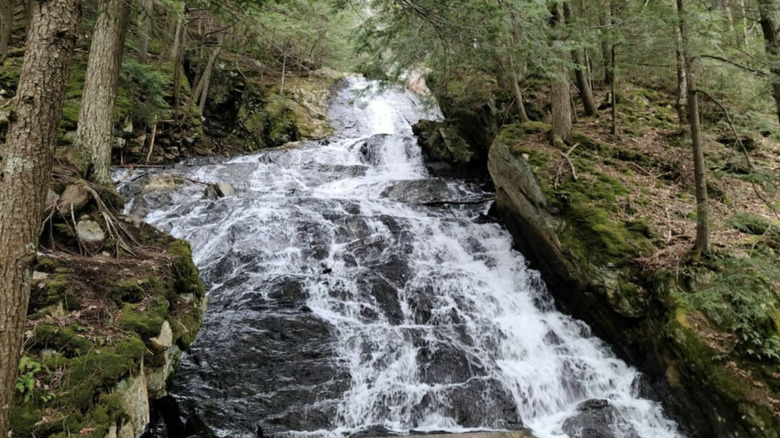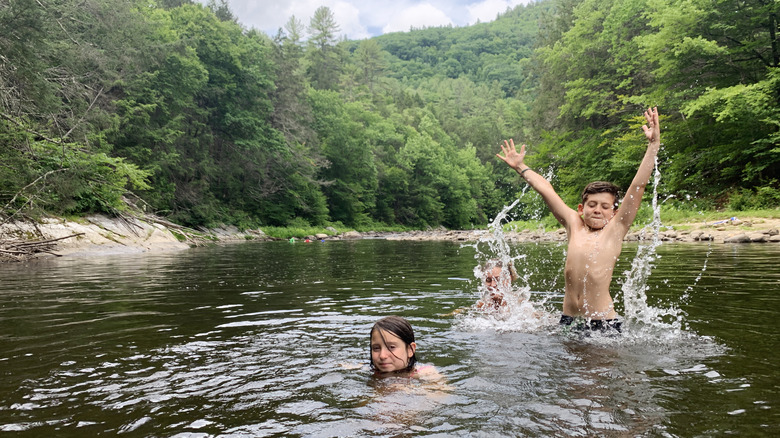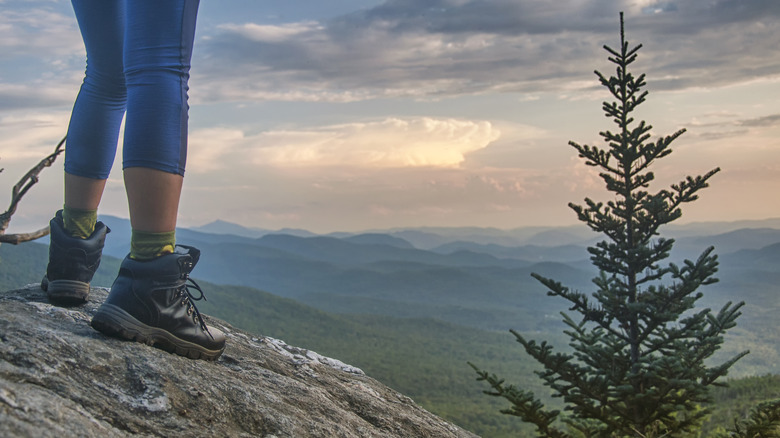Vermont's Collection Of Idyllic Waterfalls Sparkle On This Well-Maintained, Enchanting Hike
When the Green Mountain State is at its greenest, it's also its most Tolkien. The rolling hills, deep forests, and pastoral spirit of Vermont can't help but enchant, especially at full flush. Nowhere is that truer than at its hundreds of waterfalls, so often set among a magical landscape pulled from Middle-earth. Not only are they a social media darling, they also provide the state's greatest natural cool-down in summer, as the spring water and snowmelt chills as much as enlivens. Many of these waterfalls fill area swimming holes, such as this charming summer haven that's a waterfall swim hole, and at this cozy New England town that's home to one of the state's best swimming holes. In Killington, find another favorite waterfall at Thundering Brook.
The state's sixth-largest waterfall, Thundering Brook Falls tumbles 140 feet down a staircase of stone along Kent Brook, which runs from Kent Pond. Reaching the falls is remarkably easy, too, in part because the 0.3-mile trail starts with a 900-foot boardwalk through wetlands that's wheelchair accessible. From there, it turns into a smooth, gravel forest path switchbacking up a gentle slope to a platform adjacent to the falls. It's here where you'll most understand why the falls are called "thundering," as the rushing water drowns out almost all other noise. Reaching the upper portion of the falls requires a bit more dexterity, with an off-trail scramble over roots, rocks, and pits.
Swimming near Thundering Brook Falls
While the falls pour plenty of cool water, it's not the ideal place to swim. In fact, the small pool below the upper falls remains quite shallow. However, if you continue along the main trail — a segment of the Appalachian National Scenic Trail — for another 1.9 miles, you'll reach the source of the brook at Kent Pond. Part of Gifford Woods State Park, the pond covers 101 acres, reaching a depth of 20 feet. You are welcome to jump in, but the pond is preferred for boating and fishing for its largemouth bass, yellow perch, and rainbow trout. For swimming, it's better to head south along Route 100 for 10 miles to reach the Woodward Reservoir and another 7 to Echo Lake. Both are local favorites with better water quality.
Those determined to experience a postcard Vermont swimming hole can find one of the best 8 miles east of Echo Lake along the Black River in Reading. At Twenty-Foot Hole, a series of gorges, cascades, and pools flow through a shaded ravine that keeps the water extra cool in the hottest months. A 20-mile drive southwest from Kent Pond will take you to another at Lower Clarendon Gorge State Forest, where the swimming hole gleams with white marble, purple basalt, and a calcium-rich bedrock. Chittenden Reservoir in nearby Green Mountain National Forest is a good option, too, and Lefferts Pond at the southern end is ideal for swimmers seeking a quieter, boat-free option.
Travel tips for Thundering Brook Falls
Thundering Brook Falls is easy to get to by car, too. That's because it's a hop, skip, and a jump off Vermont's premier scenic drive along the route known as "Vermont's Main Street." Simply turn onto River Red Fork at Our Lady of the Mountains Church and go 2 miles to reach the trailhead. A car is also the only way to reach the trailhead, as public transport in the area is limited and sometimes non-existent. The nearest Amtrak stop is in Rutland, 15 miles west, and connects Burlington to New York City. Find another double that distance to the east in Windsor, along the Vermonter route between Washington, D.C., and St. Albans, Vermont. Two major airports are within two hours of Thundering Brook Falls: Burlington International Airport to the north and Manchester-Boston Regional Airport to the southeast.
Any visit to rural Vermont means preparing for the elements. Keeping an eye on the weather is important, even in summer, as heavy rains can make waterways unsafe. There's also abundant wildlife that shares these spaces, including black bears. That said, mosquitoes and ticks are the most immediate concern, and entering the Vermont bush without protection can be an uncomfortable experience. Always check for ticks after every hike, too. It's equally important to wear proper hiking shoes, as the tough terrain can challenge ankles and demolish sandals. Don't count on your cellphone, either, as rural Vermont is where cellphone signals go to die.


